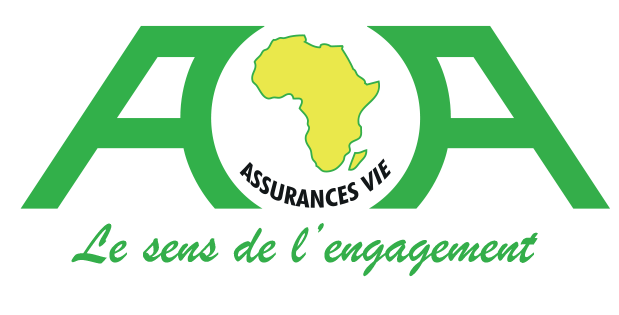 The 41st Conference and General Assembly of the Federation of African National Insurance Companies (FANAF) will be held in Marrakech, Morocco, from February 13 to 16 under the theme "New regulatory issues and operational challenges: what strategy for African insurance? ". An opportunity for African and international professionals of the insurance world to take stock of a sector in full progress in Africa.
The 41st Conference and General Assembly of the Federation of African National Insurance Companies (FANAF) will be held in Marrakech, Morocco, from February 13 to 16 under the theme "New regulatory issues and operational challenges: what strategy for African insurance? ". An opportunity for African and international professionals of the insurance world to take stock of a sector in full progress in Africa.
Africa now accounts for 1.5% of the global insurance market. In 2014, SIGMA - Swiss Re reports, this market generated $4,778 billion worldwide. In Africa, the same year, FANAF indicates that the insurance sector, in its entire area (16 countries), employed 8,572 people compared to 8,289 in 2013. In addition, says the African association, premiums written (direct business) in the 16 countries of the FANAF zone generated 1.54 billion Euros in life and non-life insurance. The Life share is 28% and the non-life share is 72%. Moreover, FANAF indicates that the technical reserves for the data from 15 countries amounted to 2.24 billion Euros. Moreover, according to some studies, an African spends on average less than 70 dollars per year to insure himself, against 1,000 dollars in South Africa and more than 2,700 dollars in Western Europe. Nevertheless, despite these figures, the insurance market still has a lot of room for growth, given the emergence and development of local operators and the attraction that the continent holds for international companies in the sector. Indeed, in a recent publication by Proparco (a subsidiary of the French Development Agency, dedicated to the private sector), Richard Lowe, founder and CEO of Activa Assurances, explains that in the field of insurance, the continent has about 600 companies operating in 54 countries (for comparison, Europe has nearly 5,000). Moreover, he explains, the top ten markets in the region account for more than 90% of the turnover. Not surprisingly, South Africa accounts for 75% of this turnover, followed by Morocco (with annual written premiums of around $3.1 billion in 2015.Editor's note), Egypt, Nigeria and Kenya. "In the other countries of the continent, insurance retains a strong margin for growth. Despite this limited share of African insurance on the global scene, many players (international brokers, European companies, etc.) have invested in the sector, attracted by its good loss ratio, which explains in particular the low exposure of African insurers to high risks. The combined ratio is, in fact, better on the continent than in developed markets," notes Richard Lowe.
Very active African and international groups
Indeed, for several years now, international groups have been developing their presence on the continent in a sector that is expected to grow rapidly thanks to the emergence of the African middle class and the diversity of demand. Thus, last June, the French group Axa Assurance (very present in Africa, notably in Cameroon, Ivory Coast, Senegal, Gabon, Algeria and Morocco) launched in Abidjan, "AXA Africa Specialty Risks" (AXA ASR), in partnership with the British insurer Chaucer Lloyds. The aim is to cover specific risks, in particular political and terrorist risks as well as those linked to the energy and infrastructure sectors on the continent. The German group Allianz is also very present in Africa with 17 subsidiaries in 12 countries and continues to expand. The American group Metlife, for its part, covers Egypt in particular. Nevertheless, African groups are also very operational on the continent, notably South Africa's Sanlam (the largest African insurer outside South Africa, present in 26 countries) and Old Mutual (the latter plans to have 10 million additional clients by 2020, outside South Africa); the Kenyan company UAP Holdings, which has a strong presence in East Africa; Pathé Dione's SUNU Assurance; the Moroccan companies Saham assurance and Wafa assurance; the Nouvelle société inter-africaine d'assurance (NSIA, which is present in 12 countries in Central and West Africa); and Activa, which has seven subsidiaries in five countries: Cameroon, Ghana, Guinea Conakry, Liberia and Sierra Leone. The company has also created the Globus network, the first insurance network on the continent, which covers 43 African countries and allows the subscription of globalized insurance solutions via a unique platform based in Cameroon.
Personal and Commercial Risks
The main players in the African insurance market are brokers, insurance companies and reinsurers. According to Richard Lowe, "Domestic brokers focus on personal lines, local SMEs, and state and parastatal risks. Over 90% of the corporate risks are held by international brokers who have been supporting their clients' investments in the African market for many years. To this end, they have set up insurance programs with companies based on the continent. Some of these companies operate only on their national market. Others, with a regional or international vocation, are increasingly organizing themselves into a network and developing subsidiaries or partnerships in several African countries. Thus, in Africa, the overall penetration rate of insurance hovers around 2%, but reaches 10 to 20% through financial players. The distribution of insurance products is done through brokers, but new distribution methods are being developed, namely the banking network (bancassurance), online sales or even via cell phones, given the high penetration rate of this tool in Africa.
The insurance market therefore offers good prospects in Africa, even if the penetration rate is still low. The development of this sector, like many others, depends on several factors, including the stability of the countries, the purchasing power of the populations and good regulation.
Source: : Forbes Afrique
